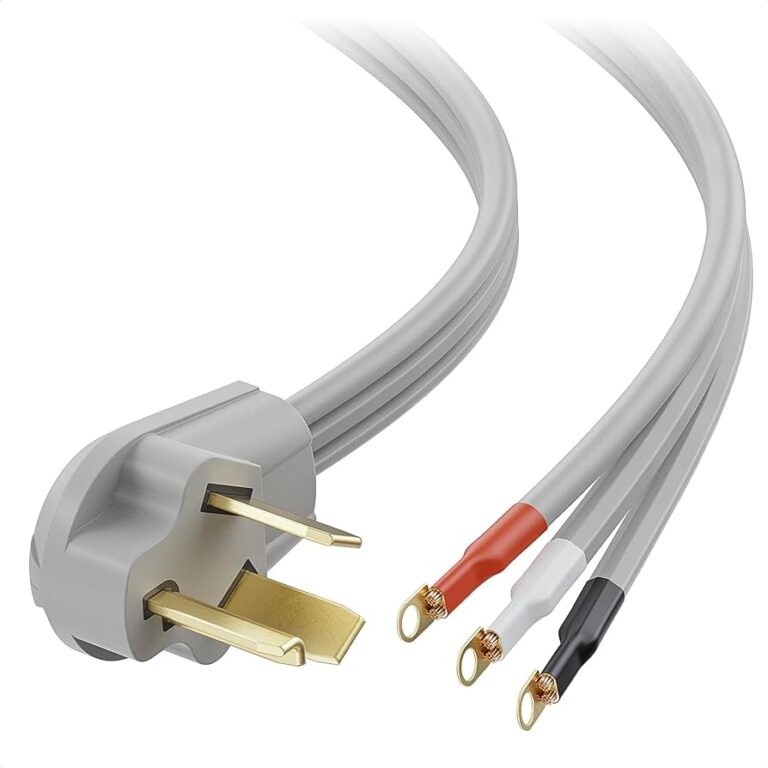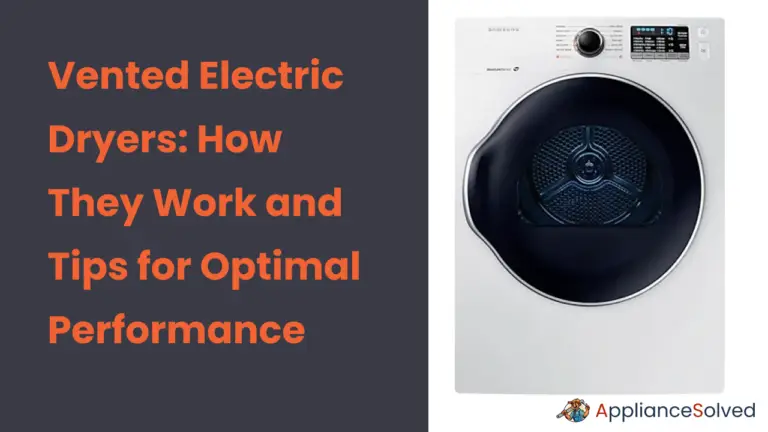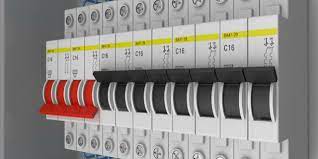Dryer Overheating: A Burning Issue
Introduction
Every year, thousands of homes experience a potentially dangerous issue: dryer overheating. While dryers are essential appliances in modern households, their misuse or neglect can lead to serious consequences, including fires. In this article, we delve into the causes of electric dryer overheating, the signs and risks associated with it, and proactive measures to prevent such incidents. We recommend that you check electric dryer troubleshooting and gas dryer troubleshooting guides.
Did you know that dryer fires account for an alarming number of household fires annually? In fact, according to the National Fire Protection Association (NFPA), dryers and washing machines were involved in one out of every 22 home structure fires reported to U.S. fire departments between 2010 and 20141. The seemingly benign household dryer can become a ticking time bomb if not properly maintained.
what is the Importance of dryers?
Dryers play a crucial role in our daily lives, providing convenience and efficiency in handling laundry. However, their potential danger lies in the buildup of lint, improper usage, and malfunctioning components. Understanding the causes and taking preventative measures is essential for the safety of your home and family.
what are the Key points preview?
This article will address three main aspects of dryer overheating:
- Causes: Uncover the reasons behind overheating, ranging from restricted airflow to faulty components and improper use.
- Signs and Risks: Explore the visible and less obvious signs of overheating, along with the associated risks such as fire hazards and property damage.
- Prevention: Provide practical tips on preventing dryer overheating through regular maintenance, proper usage, and knowing when to seek professional help.
what are the Causes of Dryer Overheating?
Dryer overheating can be attributed to various factors, categorized into three main groups: restricted airflow, faulty components, and improper use.
Restricted Airflow
1. Clogged lint filter
A common culprit behind overheating is a clogged lint filter. Neglecting to clean it after each load restricts airflow, leading to increased temperatures within the dryer.
2. Blocked exhaust vent
Blocked exhaust vents impede the release of hot air, causing it to accumulate within the dryer. Regularly clearing the vent is crucial for maintaining proper airflow.
3. Kinked or crushed vent hose
Vent hoses with kinks or obstructions disrupt the smooth flow of air. Ensuring a straight and unobstructed vent hose is essential for preventing overheating.
4. Poor dryer placement
Placing the dryer too close to walls or furniture restricts airflow, hindering the cooling process. Adequate ventilation around the appliance is vital for optimal performance.
what are the Faulty Components?
1. Broken or malfunctioning thermostat
A malfunctioning thermostat fails to regulate the dryer’s temperature, leading to overheating. Regular checks can help identify and replace faulty thermostats.
2. Clogged or damaged blower wheel
The blower wheel circulates air within the dryer. Any blockages or damage can impede its function, contributing to overheating issues.
3. Worn-out belt or pulley
A worn-out belt or pulley can disrupt the drum’s rotation, causing the dryer to overheat. Timely replacement of these components is crucial for preventing malfunctions.
4. Faulty heating element
The heating element generates the warm air needed for drying clothes. A faulty element can lead to excessive heat, posing a significant risk.
Improper Use
1. Overloading the dryer
Overloading the dryer prevents proper air circulation, causing the appliance to work harder and heat up excessively.
2. Using the wrong drying cycle
Each fabric type requires a specific drying cycle. Using the wrong setting can result in overheating and damage to clothes.
3. Failing to clean the dryer regularly
Neglecting routine cleaning, both inside and outside the dryer, allows lint and debris to accumulate, contributing to overheating.
Table 1: Causes of Dryer Overheating
| Category | Causes |
|---|---|
| Restricted Airflow | Clogged lint filter, Blocked exhaust vent, Kinked or crushed vent hose, Poor dryer placement |
| Faulty Components | Broken or malfunctioning thermostat, Clogged or damaged blower wheel, Worn-out belt or pulley, Faulty heating element |
| Improper Use | Overloading the dryer, Using the wrong drying cycle, Failing to clean the dryer regularly |
what are the Signs and Risks of Dryer Overheating?
Identifying the signs of dryer overheating is crucial for prompt intervention. While some indicators are obvious, others may go unnoticed, leading to potential risks.
what are the Obvious Signs?
The Obvious Signs are:
- Burning smell: A distinct burning odor emanating from the dryer indicates overheating, often attributed to lint or damaged components.
- Excessive heat radiating from the dryer: Touching the dryer during operation should not result in discomfort. Excessive heat suggests a malfunction.
- Clothes coming out unusually hot: If clothes are hotter than usual at the end of a drying cycle, it’s a clear sign of overheating.
- Visible smoke or flames: In extreme cases, visible smoke or flames require immediate attention to prevent a potential fire.
what are the Less Obvious Signs?
The Less Obvious Signs are:
- Longer drying times: Overheating can prolong the drying process as the appliance struggles to maintain the desired temperature.
- Clothes shrinking or wrinkling more than usual: Excessive heat can damage fabrics, leading to shrinkage or increased wrinkling.
- Increased energy bills: A sudden spike in energy consumption may be indicative of an inefficient, overheating dryer.
what are the Risks of Dryer Overheating?
The Risks of Dryer Overheating are:
- Fire hazard: The most severe consequence of dryer overheating is the risk of a fire, posing a significant threat to lives and property.
- Damage to the dryer and surrounding property: Overheating can cause internal components to deteriorate, resulting in costly repairs or replacements.
- Carbon monoxide poisoning: In rare cases, a malfunctioning dryer can emit carbon monoxide, a colorless and odorless gas that poses a serious health risk.
Table 2: Signs and Risks of Dryer Overheating
| Signs | Risks |
|---|---|
| Burning smell | Fire hazard |
| Excessive heat | Damage to the dryer and surrounding property |
| Clothes too hot | Carbon monoxide poisoning (rare) |
| Visible smoke or flames | |
| Longer drying times | |
| Clothes shrinking or wrinkling | |
| Increased energy bills |

How to Prevent Dryer Overheating?
Dryer overheating can be averted through a combination of regular maintenance practices and mindful usage.
Preventative Maintenance
Follow these preventive measures to ensure the safe and efficient operation of your dryer:
1. Clean the lint filter after every load
Regularly cleaning the lint filter prevents lint buildup, ensuring proper airflow and reducing the risk of overheating.
2. Clean the exhaust vent annually
Annual cleaning of the exhaust vent prevents blockages, allowing hot air to escape efficiently and reducing the risk of overheating.
3. Check the vent hose for kinks or blockages
Regularly inspecting the vent hose ensures unobstructed airflow, preventing overheating due to kinks or blockages.
4. Regularly inspect and clean the dryer interior
Routine checks inside the dryer can identify and address any components prone to overheating, ensuring optimal performance.
Proper Use
1. Avoid overloading the dryer
Load clothes according to the dryer’s capacity to promote proper air circulation and prevent overheating.
2. Choose the appropriate drying cycle for each load
Selecting the right drying cycle based on fabric type and load size ensures efficient drying without subjecting clothes or the dryer to unnecessary heat.
3. Ensure proper ventilation around the dryer
Maintain adequate space around the dryer to facilitate proper ventilation, preventing the buildup of heat.
4. Unplug the dryer when not in use
Disconnecting the power supply when the dryer is not in use reduces the risk of internal components overheating due to electrical issues.
Table 3: Preventing Dryer Overheating
| Preventative Maintenance | Proper Use |
|---|---|
| Clean lint filter after every load | Avoid overloading the dryer |
| Clean exhaust vent annually | Choose the appropriate drying cycle |
| Check vent hose for kinks | Ensure proper ventilation around the dryer |
| Regularly inspect and clean the dryer interior | Unplug the dryer when not in use |
When to Call a Professional?
While basic troubleshooting can address some issues, certain situations require professional intervention.
- Suspected internal component failures: If you suspect a malfunctioning thermostat, blower wheel, heating element, or other internal components, seek professional assistance.
- Uncertain diagnosis: If you’re unsure about safely diagnosing or fixing the problem, consulting a professional ensures accurate and safe resolution.
- Persistent overheating: If the issue persists despite attempting basic troubleshooting steps, professional assessment becomes imperative.
faq about Dryer Overheating
What would cause a dryer to overheat?
Dryers can overheat due to various reasons, including:
- Restricted Airflow: Clogged lint filters, blocked exhaust vents, kinked vent hoses, or poor placement impede proper airflow.
- Faulty Components: Malfunctioning thermostats, clogged blower wheels, worn-out belts, or faulty heating elements can lead to overheating.
- Improper Use: Overloading the dryer, using the wrong drying cycle, or neglecting regular cleaning contribute to overheating.
Will a dryer stop working if it gets too hot?
In many cases, modern dryers are equipped with safety mechanisms that can cause them to shut off if they detect excessive heat.This is a protective measure to prevent fires or damage to internal components. However, Dryer Keeps Shutting Off sometimes its an issue, it’s essential to address the underlying cause of overheating to ensure the continued safe and efficient operation of the dryer. Also read about dryer not getting hot guide.
What causes a condenser dryer to overheat?
Condenser dryers can overheat due to similar factors as traditional dryers, including:
- Restricted Airflow: Blocked condenser unit or lint filters hinder efficient heat exchange.
- Faulty Components: Malfunctioning thermostats, damaged blower wheels, or faulty heating elements affect the temperature regulation in condenser dryers.
- Improper Maintenance: Neglecting regular cleaning of condenser coils or the surrounding area can lead to overheating.
What causes a dryer motor to burn out?
Several factors can contribute to the burnout of a dryer motor:
- Overloading: Putting excessive load on the dryer can strain the motor, leading to overheating and burnout.
- Blocked Ventilation: Poor airflow due to blocked vents or clogged components forces the motor to work harder, increasing the risk of burnout.
- Age and Wear: Over time, the motor may wear out, and its efficiency decreases, making it more susceptible to overheating and burnout.
- Electrical Issues: Voltage fluctuations or electrical problems in the home can adversely affect the motor, potentially causing burnout.
Table 4: Summary of FAQ Responses
| FAQ | Summary |
|---|---|
| What would cause a dryer to overheat? | Causes include restricted airflow, faulty components, and improper use. |
| Will a dryer stop working if it gets too hot? | Modern dryers often have safety mechanisms to shut off, but addressing the cause is crucial. |
| What causes a condenser dryer to overheat? | Similar to traditional dryers, issues with airflow, components, and maintenance can lead to overheating. |
| What causes a dryer motor to burn out? | Factors include overloading, blocked ventilation, age, wear, and electrical issues. |
Conclusion
Dryer Overheating, maintaining dryer safety is paramount for every household. Understanding the causes, recognizing the signs, and implementing preventative measures are crucial steps in preventing the potentially devastating consequences of dryer overheating. By following these guidelines and knowing when to seek professional help, you can ensure the efficient and safe operation of your dryer, safeguarding your home and loved ones. Also, you can raed about gas dryer overheating problem troubleshooting guide.
Additional Resources
For more information and support on dryer safety, refer to the following resources:
- U.S. Consumer Product Safety Commission (CPSC) – Clothes Dryer Fire Safety Tips
- Appliance Repair Professionals Directory
Remember, a little maintenance goes a long way in ensuring the longevity and safety of your appliances.







